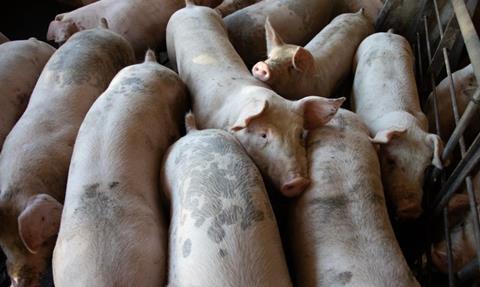The latest RUMA Targets Task Force 2 (TTF2) progress report has been released today [Tuesday 8th November], which summarises the second year of progress against the current set of antibiotic use targets which span 2021-2024.

The report highlights where targets are already being achieved or sustained, and where challenges still remain. The Veterinary Medicines Directorate’s (VMD) Veterinary Antimicrobial Resistance and Sales Surveillance (UK-VARSS 2021) report, was also released, and shows that UK antibiotic sales for food-producing animals have reduced by 55% since 2014, to 28.3 mg/kg. This represents the lowest sales to date.
This latest RUMA TTF summary report covers ten sectors across aquaculture, pigs, poultry and ruminants and provides the latest annual progress update in the second cycle of TTF goals across all UK livestock sectors for data collection, use of antibiotics, uptake of preventative measures such as vaccines and training, and the development of industry initiatives. This second cycle builds on the successful implementation of the last targets released back in 2017 which helped to halve sales of antibiotics to treat UK farm animals.
Cat McLaughlin, RUMA chair and chair of the RUMA Targets Task Force 2 said: “As we reach the half-way point, two years into the second cycle of the RUMA Targets Task Force targets, I continue to be impressed by the commitment of farmers, vets and everyone in the food supply chain, and am full of praise for the work of UK agriculture in its efforts to tackle AMR.
“The past two years since the launch of the second set of TTF targets have not been easy; the impacts of the global pandemic, the UK’s exit from the European Union, coupled with rising production costs, ongoing labour shortages, ongoing trade negotiations, supply chain issues contributing to animals remaining on farm longer than usual, and the onset of the cost-of-living crisis, has made for challenging conditions right across UK farming. For some sectors such as poultry, there have also been significant disease outbreaks such as Avian Influenza, the worst ever experienced.
“I highlighted in my TTF Report introduction last year that the impacts of the challenging environment in which UK agriculture has been operating are yet to be fully understood on the journey towards the targets and as expected, some of those impacts continued to play out during 2021 and well into 2022.
“Yet despite that, the industry has remained united and focused when it comes to addressing the AMR challenge and has not wavered in its commitment.
“All sectors continue to strive to keep antibiotics effective and fit for purpose and only use them when necessary. The report also contains an overview of some of the many industry initiatives and tools that now exist to support the responsible use of antibiotics so that we can work to protect antibiotic efficacy long into the future. Initiatives such as Medicine Hub developed by AHDB, Farm Vet Champions from RCVS Knowledge, the electronic Medicine Book for Pigs also developed by AHDB and many more; all generated over the last decade and which clearly demonstrate the unity and collaboration that is embedded into the industry, in particular a commitment to data collection, training and best practice. And it’s important to reiterate that the falls in antibiotic use that have been achieved to date have been done so through a collaborative voluntary effort – something we should all be very proud of.”
Cat added: “The successes to date across the industry has put the UK ahead of most food producing EU countries and the current RUMA targets up to 2024, further reinforce the ongoing commitment across all the sectors to achieve sustainable reductions. I also wanted to take a moment to reflect on the huge shift in engagement that has been seen during the lifecycle of the TTF so far; the numerical targets are important but so too is the huge energy that exists across the industry in recognition of and response to the AMR challenge.
“Antibiotic stewardship is now part of everyday language, with farmers and vets working collaboratively to embed best practice for responsible use across all sectors. As we look ahead to the next two years of the TTF2 targets cycle, we will see new UK veterinary medicines regulations, which we hope will complement the voluntary commitment to responsible use shown across farmed animal, fish and poultry sectors, and is reflected in the ongoing development and strengthening of a wide range of industry initiatives.”
Abigail Seager, chief executive of the Veterinary Medicines Directorate, said: “I’m delighted with the continued progress in so many areas of this year’s UK- VARSS report. The overall decreasing trends in antimicrobial usage and resistance levels in livestock, shows the UK has continued in its mission to build on the antibiotic stewardship principles we have implemented in the past seven years. Our evolving surveillance programmes are essential to alert us to any emerging risks or unexpected changes. The UK’s collaborative and voluntary approach to reducing antimicrobial usage in farming is one we are very proud of and the VMD welcomes the progress sectors are making against their responsible antibiotic use targets as reported in today’s newly published RUMA Targets Task Force 2 report.”
To view and download the full RUMA TTF Report and all previous reports visit: Reports – RUMA
This story was originally published on a previous version of the Meat Management website and so there may be some missing images and formatting issues.












